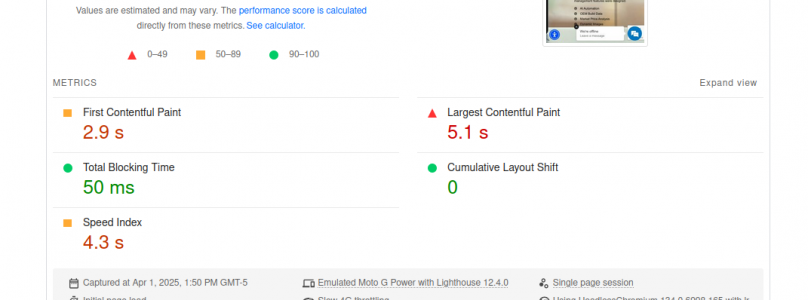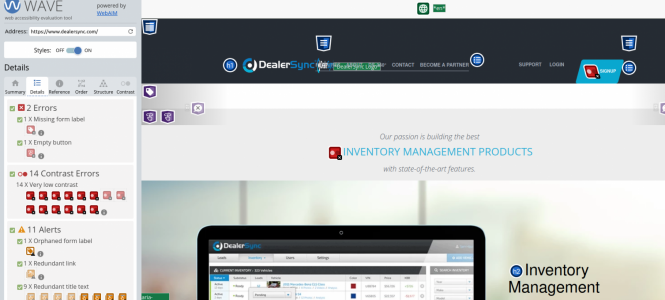They played you for a fool.
It’s cruel, but since no one else’s is going to school you, I will.
The scandal isn’t that they built you a slow bloated website with no flow or goal.
The scandal is that YOU trusted them to build a website that wasn’t a cluttered up, rusted up, hunk of junk. You trusted that had your best interest in mind. That they were building you a quality website, that would convert users into customers, secure your data, and defend your business.
But these aren’t competent companies. These are the dumbest, most self-serving business to ever hold power over the dealership.
They’re not just betting you’re uninformed, they’re betting you’ll stay that way!
Their websites aren’t just costing you money, they could get you fined and sued, because 99% of dealership websites fail Google performance standards, aren't ADA compliant, and don't have valid code.
Your website is designed to burn through money like a wildfire in a cornfield!
Then they denied it. Lied. Engineered for Speed. Accessibility First. Inclusive by Design. And the dealerships blame Google, Facebook, and all the other platforms for leads not converting but never, the developer.
And they want you to believe it isn’t a big deal.
But it is.
This wasn’t a mistake by your web developer. This was a top down decision to put their profits over yours.
And the dealership can’t replace them because they’re protected.
Why?
Because neither the OEMs or the website providers are looking out for what’s in your best interest.
Your website provider has how many dealerships signed up for their services?
Go look at your competitor’s website and see who is hosting their dealership. Are you both using the same vendor? Do you really think the vendor is going to put your interests over everyone else?
No.
Their plan is to provide an even level of exposure and leads for everyone. Even if they did find something that worked well for your dealership, they certainly wouldn’t keep it exclusive to you, it would be spread to everyone overnight along with an email explaining how lucky everyone is to have this new feature.
But poor websites are just the tip of the iceberg. Your struggles are compounded by a fractured relationship with manufacturers.
It’s especially important to understand this concept when you are evaluating the relationship you have with the manufacturer.
Which is better for a manufacturer, to have one dealer in a large DMA who is number one in the U.S. or 4 average dealers doing the same volume as the one?
They make more money, have a bigger footprint, more diversity, and more control over four smaller dealership than one big dealership, especially if that dealership runs into financial difficulty.
Your customers are shopping online!
The CRM system and customer data is a key component to successful sales but with today’s tools and the ability to mine that data your customer information is extremely valuable.
And in addition to that OEM’s are seriously exploring bypassing the traditional dealership model for EV sales.
It’s important to understand the game your playing and that includes the dealer manufacturer relationship, so you can leverage it where you can, protect yourself when necessary, and use everything you can to beat your competition.
It’s cruel, but since no one else’s is going to school you, I will.
The scandal isn’t that they built you a slow bloated website with no flow or goal.
The scandal is that YOU trusted them to build a website that wasn’t a cluttered up, rusted up, hunk of junk. You trusted that had your best interest in mind. That they were building you a quality website, that would convert users into customers, secure your data, and defend your business.
But these aren’t competent companies. These are the dumbest, most self-serving business to ever hold power over the dealership.
They’re not just betting you’re uninformed, they’re betting you’ll stay that way!
Their websites aren’t just costing you money, they could get you fined and sued, because 99% of dealership websites fail Google performance standards, aren't ADA compliant, and don't have valid code.
Your website is designed to burn through money like a wildfire in a cornfield!
Then they denied it. Lied. Engineered for Speed. Accessibility First. Inclusive by Design. And the dealerships blame Google, Facebook, and all the other platforms for leads not converting but never, the developer.
And they want you to believe it isn’t a big deal.
But it is.
This wasn’t a mistake by your web developer. This was a top down decision to put their profits over yours.
And the dealership can’t replace them because they’re protected.
Why?
Because neither the OEMs or the website providers are looking out for what’s in your best interest.
Your website provider has how many dealerships signed up for their services?
Go look at your competitor’s website and see who is hosting their dealership. Are you both using the same vendor? Do you really think the vendor is going to put your interests over everyone else?
No.
Their plan is to provide an even level of exposure and leads for everyone. Even if they did find something that worked well for your dealership, they certainly wouldn’t keep it exclusive to you, it would be spread to everyone overnight along with an email explaining how lucky everyone is to have this new feature.
But poor websites are just the tip of the iceberg. Your struggles are compounded by a fractured relationship with manufacturers.
It’s especially important to understand this concept when you are evaluating the relationship you have with the manufacturer.
To an even greater degree your interests and the OEM’s do not align.
Yes, they want you to make more sales and move more inventory, but they don’t want you to swallow the other fish in the pond because it is not beneficial to them.Which is better for a manufacturer, to have one dealer in a large DMA who is number one in the U.S. or 4 average dealers doing the same volume as the one?
They make more money, have a bigger footprint, more diversity, and more control over four smaller dealership than one big dealership, especially if that dealership runs into financial difficulty.
Your customers are shopping online!
The CRM system and customer data is a key component to successful sales but with today’s tools and the ability to mine that data your customer information is extremely valuable.
The manufacturer wants it, they want to know where it came from and how you got it.
They want to use it themselves, but just as importantly they want to understand and copy your successful marketing strategies for their other dealers and their own marketing goals.And in addition to that OEM’s are seriously exploring bypassing the traditional dealership model for EV sales.
1. High Distribution and Operating Costs
Ford CEO Jim Farley explicitly stated that "the auto manufacturer's distribution and advertising costs are up to $2,000 per vehicle in its current business model", a significant expense that direct sales could reduce. This financial burden represents a major pain point for manufacturers seeking to streamline operations.2. Dealer Price Gouging
Multiple manufacturers have expressed frustration with dealerships applying excessive markups on popular EV models. Ford faced numerous "complaints of dealer price gouging on the Ford Lightning" despite "many warnings from the manufacturer to stop". This behavior damages brand reputation and consumer trust.3. Lack of Control Over Customer Experience
OEMs increasingly view the traditional model as problematic because it means "handing off this important relationship to independent dealers early on". Manufacturers want to ensure quality sales experiences that "align fully with the brand message".4. Misaligned Incentive Structures
Dealerships are "incentivized to sell gas cars and trucks instead of EVs due to future service needs and the requirements of gasoline vehicles". This fundamental misalignment makes dealers less enthusiastic about promoting electric vehicles.The Dealership OEM Relationship
And at best they are not interested in helping you become the top selling dealership, they are interested in making ALL their dealers top sellers.It’s important to understand the game your playing and that includes the dealer manufacturer relationship, so you can leverage it where you can, protect yourself when necessary, and use everything you can to beat your competition.
Last edited:










